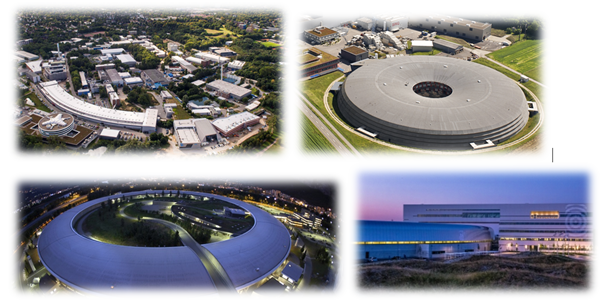Synchrotron radiation is produced in facilities which are designed for this specific purpose and are commonly referred to as synchrotrons. Here, charged particles, typically electrons, are accelerated and forced to circulate at a speed close to the light speed in a storage ring that typically has a diameter of more than a hundred meters. There are beamlines all along the ring, experimental stations, where an X-ray beam is generated by leading the electrons through an insertion device, a periodic magnetic structure. The beam is focused on the sample, and has properties that make it ideal for imaging or ultrafast diffraction experiments. In particular, it is very intense and well-collimated, and the energy/wavelength is tunable.
Depending on the synchrotron and the beamline features, different kinds of experiments can be performed. Different techniques, such as Scanning Transmission X-ray Microscopy (STXM) and diffraction, X-ray fluorescence, Coherent Diffraction Imaging, and many others, can be exploited. Some setups even allow such experiments under in situ, or in operando conditions, i.e. while a material or a device is subjected to non-ambient conditions.
In recent years, we have established several collaborations with beamlines at the major European facilities, where most of our experiments are carried out. For more information, please refer to the links below:
DESY SLS ESRF MAX IV
